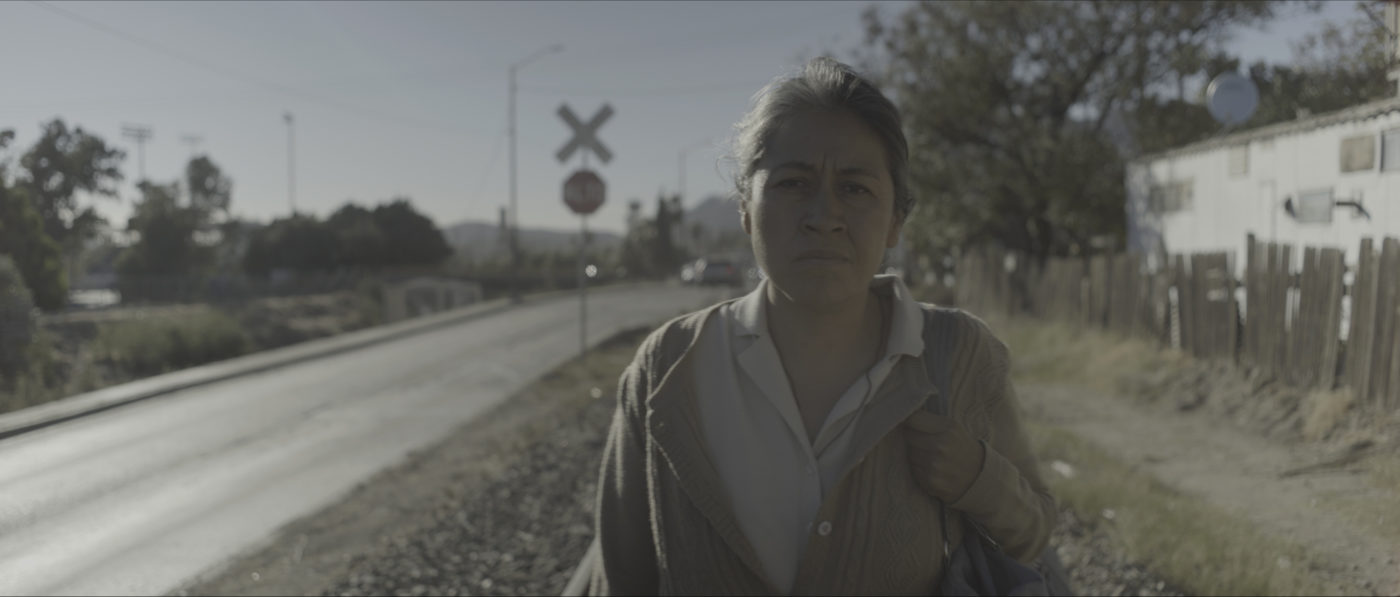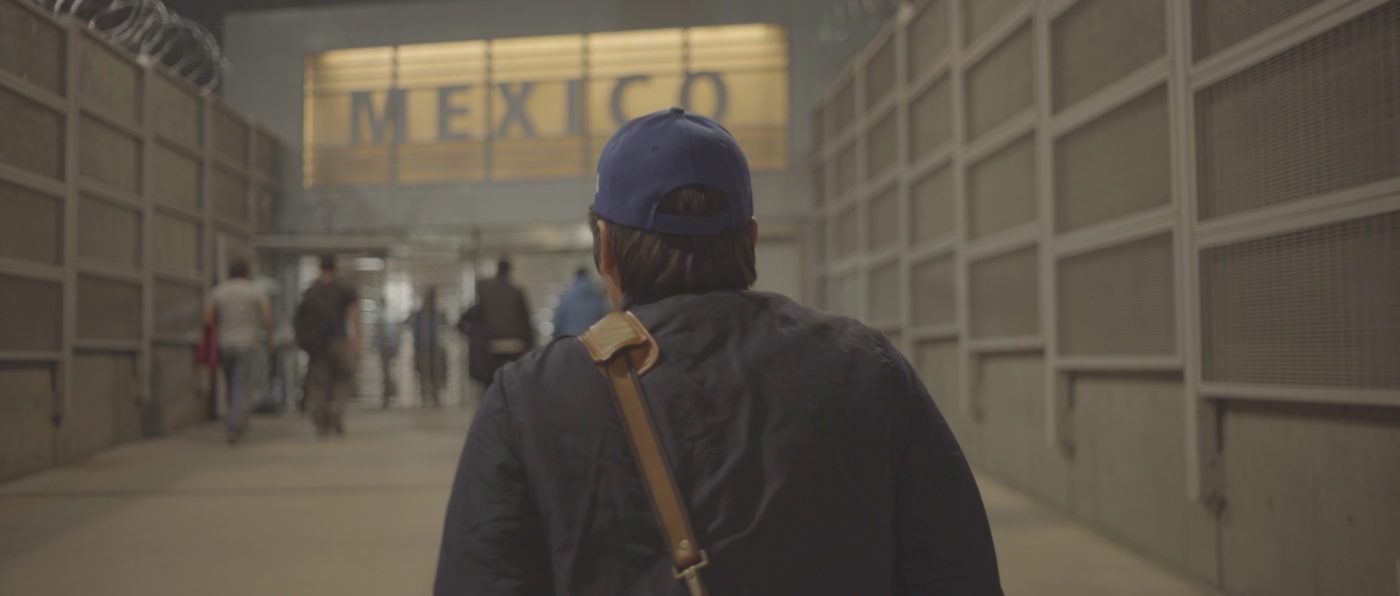I am always weary of critics who claim to have seen the first great film of the year this early in the game. Well I, uh, how can I put it…I recently did: Mexican director Fernanda Valadez’s devastating feature debut Identifying Features (Sin señas particulares) which opens this weekend at virtual cinemas nationwide, including the Gene Siskel Film Center at the School of the Art Institute’s Film Center from Your Sofa. Ever since its world premiere last year at the Sundance Film Festival (where it won the Audience Award in the category of World Cinema – Dramatic and the World Cinema Dramatic Special Jury Award for Best Screenplay), the film has earned critical acclaim and additional accolades as it has made the festival rounds culminating with a Gotham Independent Film Award for Best International Feature early this month. Co-written with Astrid Rondero, Identifying Features not only heralds the arrival of a new powerful voice but stands as a testament to the exciting work that is being made by women filmmakers all over Latin America, including Valadez’s compatriot Lila Avilés (The Chambermaid) and Perú’s Melina León (Song Without a Name).
Valadez knows when and how to dole out information, how to snare us in its narrative grasp while creating a deep connection with her characters. I am almost hesitant to even describe the film since one of its pleasures is how we, the audience, are at first left in the dark to the point where some of the characters’ names are revealed minutes after their introduction (and I don’t mean a couple of minutes; sometimes more than 15 minutes pass before they are addressed by their name by another character).

Identifying Features offers three potential narrative strands: a young man who we later find out is named Jesús tells his mother he is leaving Guanajuato for Arizona with best friend Rigo. Two months later, without news of their sons, the two mothers are sitting in front of a government functionary, presumably an agent of the law who, after telling them the best they can do is file a missing persons report, hands them a huge binder full of photos provided by Mexico’s Federal police of bodies found in shallow graves. The camera zooms into the face of Rigo’s mother as Magdalena (Mercedes Hernández), Jesus’ mother, begins to turn the pages. The camera stays on Rigo’s mother as she hears the sound of those pages, her face registering anticipation, hope and dread until Magdalena stops flipping and hands over the binder, open on the page with images of Rigo’s mangled body. Magdalena will soon experience that same mixture of hope, anxiety and despair as she sets out to find out what happened to her son.
A third mother enters the picture at this point: an ophthalmologist whose son disappeared on a trip to Monterrey four years ago. His body has apparently been found and she is called in to identify his remains at a center where bodies are stored for identification. There she meets Magdalena who has been told to sign a document declaring her son dead after his bag was found next to Rigo’s corpse. And just when you think that this woman will play a major role in the film, she disappears after advising Magdalena not to give up on her search; the ophthalmologist’s search has come to a sad end after all. Yet, it’s a pivotal moment for here we see two mothers, from two very different social strata, finding common ground in the violence that has taken their children away from them. And then, a new story strand is introduced, one that will serve as a mirror to Magdalena’s journey: a young man is deported from the United States back to Mexico, the camera following him as he crosses gate after gate, revolving door after revolving door, bridge after bridge, back to the violence he left behind him when his family encouraged him to migrate. His is Jesus’ trip in reverse but also Magdalena’s. He is coming home and will soon find himself looking for answers to his mother’s disappearance. After encountering a wall of silence and fear in her search, Magdalena meets this young man, Miguel (David Illescas), on her way to Ocampo, his hometown, where she expects to meet a man who may know what happened to her son. Miguel and Magdalena find instead a ghost town, its inhabitants chased out (and in some cases killed) by the local cartels.
Valadez keeps the violence at bay, mostly off-camera, except for a pivotal flashback, which we get in bits and pieces until Magdalena meets that man; and even then the brutal acts are hinted at, not graphically depicted. But the potential for violence is ever present and made manifest in other ways: in that vehicle that follows Pedro, Rigo’s father, as he drives Magdalena north to a forensic lab or in the fear in the voice of a bus line employee who at first refuses to help Magdalena but then, behind a bathroom door, shares an invaluable piece of information, her face hidden from view; or even in the decomposing cattle Miguel finds in a shed in his now missing mother’s property. And then there’s that eerie silence that follows Magdalena’s insistent pleas, the silence of the beautiful and imposing Guanajuato landscapes, themselves witnesses to the brutality committed in this land. It is a stillness that Director of Photography Claudia Becerril Bulos patiently captures as her camera watches Magdalena in her search for answers. As Magdalena, Mercedes Hernández is the film’s emotional anchor, a measured, moving, subtle performance that gives voice and even a name to the thousands of Mexican mothers demanding justice and the right to be given closure.

There is not only pain; there is also guilt. And it is curious that such guilt is voiced by the men while the women do the heavy lifting in their search for answers. “Why did he leave? He had a life here,” laments Pedro as he drives Magdalena north. “I hardly sent her anything. If I hadn’t been deported, I wouldn’t have come back,” admits Miguel. Being forced into exile, being ripped from your country, and the violence that migrants face on their journey north leave deep emotional and psychological scars on families and individuals. But nothing, absolutely nothing, prepares you for the emotional gut punch Valadez delivers in the film’s final minutes. It turns the idea of a mother’s worst nightmare on its head. It is unexpected, inevitable and horrible. It leaves you breathless.
Identifying Features is the work of a confident filmmaker who is in complete control of the expressive potential of the medium, of how to use the aural and visual power of cinema to take us deep inside a national nightmare. I certainly hope critics and audiences, but especially critics, don’t overlook this film the way most of them overlooked Fernando Frías de la Parra’s equally extraordinary tale about violence and immigration I’m No Longer Here. Personally, I cannot wait to see what Fernanda Valadez comes up with next.